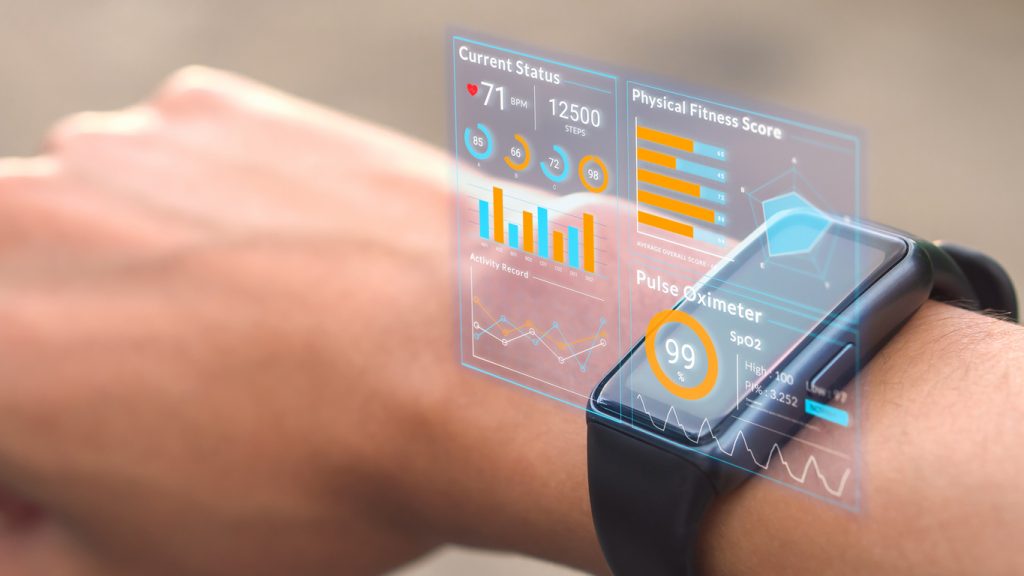The global market for wearable medical devices is transforming how we prevent, diagnose, and treat illness. Wearable medical devices rely on sensors, connectivity features, and advanced technologies to monitor health data and provide real-time updates for remote patient management. These devices are being used for a range of medical and healthcare applications including vital sign monitoring, glucose monitoring, cardiac monitoring, sleep tracking, activity tracking, medication adherence, pain management, and more.
Wearable devices support patient self-care, but they are also becoming essential tools for healthcare professionals to perform health monitoring and early detection of medical conditions. As a result, the healthcare industry is embracing wearable devices on a collective mission to usher in a new era for preventative health and provide more personalised patient care. Global demand for wearable medical devices is expected to grow at an impressive 27.4% compound annual growth rate (CAGR) from a market size of $29 billion in 2022 to $325.7 billion by 2032, according to Research and Markets.
However, as these devices and their components become smaller and more powerful, testing and validation become increasingly complex in the design phase. Many factors must be tested during the development cycle to ensure that wearable healthcare devices can operate reliably, effectively, and securely in the real world. Here is a closer look at the top three factors for designing wearable healthcare devices that users can depend on.
Reliability of wearable healthcare devices
The development cycle requires rigorous testing and validation processes to ensure that wearable healthcare devices remain trustworthy. The devices must consistently provide reliable performance and accurate data, but that can be challenging due to the diversity of applications. Devices such as smart rings, blood pressure-monitoring bracelets, and brainwave-reading headbands leverage advances in biofeedback to track physical and even emotional responses, including stress, alertness, and drowsiness through eye movement.
The reliability of wearable medical devices also requires batteries that can stand the test of time. Advanced battery test and emulation software is being used to create profiles of actual batteries, which can then be applied in repeated tests without having to use actual batteries. It’s also important to measure how a connected device consumes a charge over time through battery drain analysis, and then uncover new ways to optimise battery life through event-based power analysis.
Wireless connectivity is another important concern. Testing is needed to analyse 5G signals and Bluetooth transmissions to make sure that connected medical devices can co-exist in noisy wireless hospital environments. In addition, AI-driven test automation can be used to help evaluate the user experience. Software-based solutions explore all potential paths through complex applications by testing all possible user journeys. Automation delivers results significantly faster than traditional testing and it automatically focuses more attention on testing areas where defects are prevalent, ensuring that manufacturers can deliver effective and safe devices on time.
Interoperability
The ability for different devices and systems to communicate and share data, while complying with standards, is vital for delivering early disease detection and developing more promising treatment options. Developers will need to collaborate across a sound, interoperable ecosystem. In this way, real-time integration between electronic health records (EHR) can lead to more personalised patient care by allowing physicians to monitor patients remotely, collect data, and reduce the time and costs associated with treatments.
The healthcare industry’s push towards digitalisation has produced a growing need for software quality assurance in EHR systems. Automated software testing can help improve the interconnectivity of system components, while greatly surpassing the capabilities of manual testing.
Security
Devices such as electrocardiogram (ECG) monitors and other clinical sensors enable healthcare professionals to monitor a variety of health metrics. However, many connected devices in use today have not been designed with adequate security, making them targeted points of entry for bad actors.
Proper security measures include encryption, secure data transmission, and compliance with regulatory requirements such as the Health Insurance Portability and Accountability Act (HIPAA). To ensure that devices comply with regulatory standards, manufacturers may need to obtain approval from the FDA, depending on the wearable device’s application and intended use.
Cyberattacks risk patient safety, block access to electronic health systems, and threaten highly sensitive confidential patient records. Ransom payments, downtime, and recovery efforts can be extremely costly, but healthcare organisations are fighting back to reduce vulnerabilities, get in front of potential attacks, and improve their mitigation strategies in case of attacks.
Internet-enabled medical equipment and devices are becoming more mainstream for diagnosing, treating, and monitoring patients. For this reason, wearable healthcare devices must be made dependable to achieve widespread adoption and enhance the quality of healthcare. While these technologies are improving the standard of care, they have introduced new challenges for healthcare practitioners, administrators, and patients. The good news is that many of these concerns can be mitigated or even eliminated through rigorous testing in the engineering and design phase.
By Marie Hattar, SVP, Keysight Technologies

